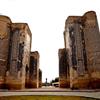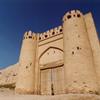Uzbekistan is a landlocked nation that is situated in the Central Asia and it was previously a part of the Soviet Union. On the east it is bordered by Tajikistan and Kyrgyzstan, on its west it is bordered by Kazakhstan, on the south it shares border with Turkmenistan and Afghanistan. Majority of the people living in this nation are of Uzbek origin. The language that many people of Uzbekistan speak is the Uzbek language. The country has many young people living on its land, with about 34% of its population under the age of 14 (according to the 2008 census). About 4/5th of the people living in this country are Uzbeks and other ethnic groups found here are Tajiks, Russians, Kazakhs, Karakalpaks and Tatars. There are also some Korean people living in Uzbekistan.
It is believed that about one-tenth of the working population of Uzbekistan work in other countries like Kazakhstan and Russia. The main religion in the country is Islam but there are many Christians and Jews in the country as well. While many people speak the Uzbek language, there are also a handful of people who converse in the Tajik language. Most of the people use Russian language to communicate with people of different ethnicities.























